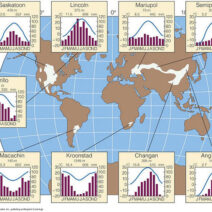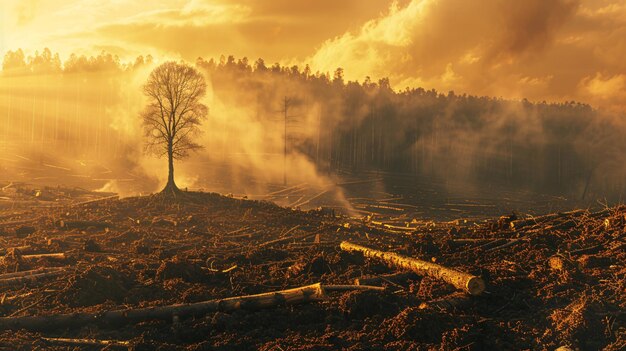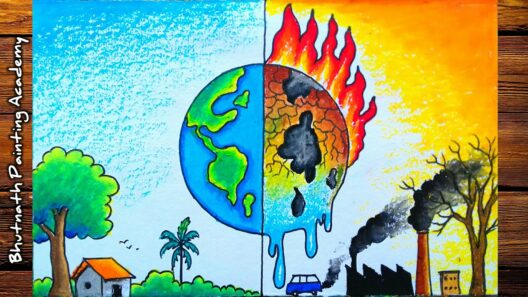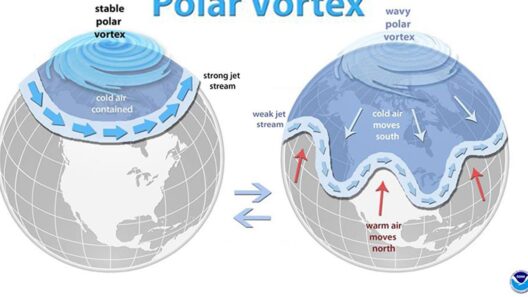In an age where the digital sphere often eclipses tangible realities, one can hardly dismiss the resounding silence of trees—guardians of our planet. Each tree serves as a colossal sentinel, a bastion of biodiversity, and a harbinger of vital ecological balance. Yet, the relentless advance of deforestation has transformed these sentinels into mournful specters, echoing the profound consequences of our actions. The act of cutting down trees for timber, agriculture, and urban expansion extends beyond mere loss of greenery; it creates a cascade of environmental repercussions that reverberate around the globe.
The loss of forests, often referred to as the lungs of the Earth, is comparable to suffocating a vibrant organism. Trees absorb carbon dioxide, releasing oxygen—a crucial exchange that sustains life. Deforestation, however, disrupts this fundamental process. Each felled tree not only releases stored carbon back into the atmosphere but also diminishes our planet’s ability to sequester future carbon emissions, propelling global warming to alarming heights. This phenomenon can be likened to removing an essential organ from a living being, leaving the organism gasping for breath.
Beyond the carbon footprint, deforestation precipitates a myriad of ecological consequences. Forests are intricate ecosystems that host countless species of flora and fauna. The eradication of these habitats leads to an irreplaceable loss of biodiversity. When one species vanishes, it triggers a domino effect; the interdependencies that sustain ecosystems begin to unravel. Much like the intricate web of a spider, the loss of any single strand compromises the strength of the entire structure. The extinction of species is not merely a tragedy; it disrupts the delicate balance of nature, resulting in altered ecological relationships and the emergence of invasive species that can further destabilize environments.
Furthermore, the soil erosion that accompanies deforestation whispers tales of devastation. The protective canopies of trees are essential for maintaining soil integrity. When trees are removed, the soil is left exposed, more susceptible to erosion by wind and rain. This not only degrades the landscape but also leads to sedimentation in rivers and streams, disrupting aquatic ecosystems and harming freshwater species. The loss of arable land becomes inevitable, further jeopardizing food security for growing populations. The interconnectedness of these systems is striking; what appears to be a localized loss has global ramifications.
Water cycles are another casualty of deforestation. Trees play a pivotal role in maintaining the hydrological balance of an area, drawing water from the soil and releasing it into the atmosphere through a process known as transpiration. With fewer trees, the local climate alters; rainfall diminishes, and hotter temperatures prevail. The analogy of a drum resonates—less tension results in muted sound. Similarly, a diminished forest yields a less vibrant ecosystem, leading to droughts in some regions and floods in others. The imbalances created can devastate communities that depend on reliable rainfall for agriculture and drinking water.
Socially, the impact of deforestation extends into the lives of indigenous and rural communities. Many of these groups rely on forests for their livelihoods, culture, and identity. When forests are decimated, it is not just the loss of trees but the annihilation of heritage and way of life. Land disputes arise, and marginalized communities often find themselves on the front lines of conflict, battling corporate interests and government policies that favor economic growth over ecological sustainability. As the roots of a tree intertwine with the earth, the loss of forests severs the links that bind humans to nature.
Yet, the story of deforestation is not solely one of despair; it is a call to action. Reforestation and sustainable land management practices provide avenues for recovery. By restoring the canopy, we can begin to repair the damaged lungs of our planet. Initiatives that promote agroforestry and permaculture offer sustainable alternatives to slash-and-burn agriculture, allowing for food production while preserving vital ecosystems. This proactive approach can create a more harmonious relationship between human activity and the natural world, akin to a symphony where every instrument has its role in the composition.
The challenge requires a collective commitment—a recognition that every act counts. From consumer choices that favor sustainably sourced products to governmental policies that prioritize conservation, change can manifest through concerted efforts. The metaphor of a mosaic encapsulates this idea; every piece, no matter how small, contributes to the grand design of a healthier planet. Properly designed conservation strategies can protect existing forested areas while simultaneously restoring degraded landscapes.
Moreover, education plays an indispensable role in fostering a culture of conservation. Arming individuals with knowledge about the effects of deforestation can fuel advocacy and inspire action. Through film, literature, and community initiatives, awareness can spread like ripples in a pond, prompting larger movements that resonate on a global scale.
The urgent narrative of deforestation is not just confined to the felling of trees; it encompasses significant repercussions that affect our climate, biodiversity, and human communities. It is a complex web of interdependence that requires our attention. The time for action is not tomorrow; it is now. We must become the stewards of our planet, recognizing that the future of both humanity and nature is intertwined inextricably. Like the ancient trees that have stood for centuries, we must root ourselves in sustainable practices, allowing the earth to breathe anew.







